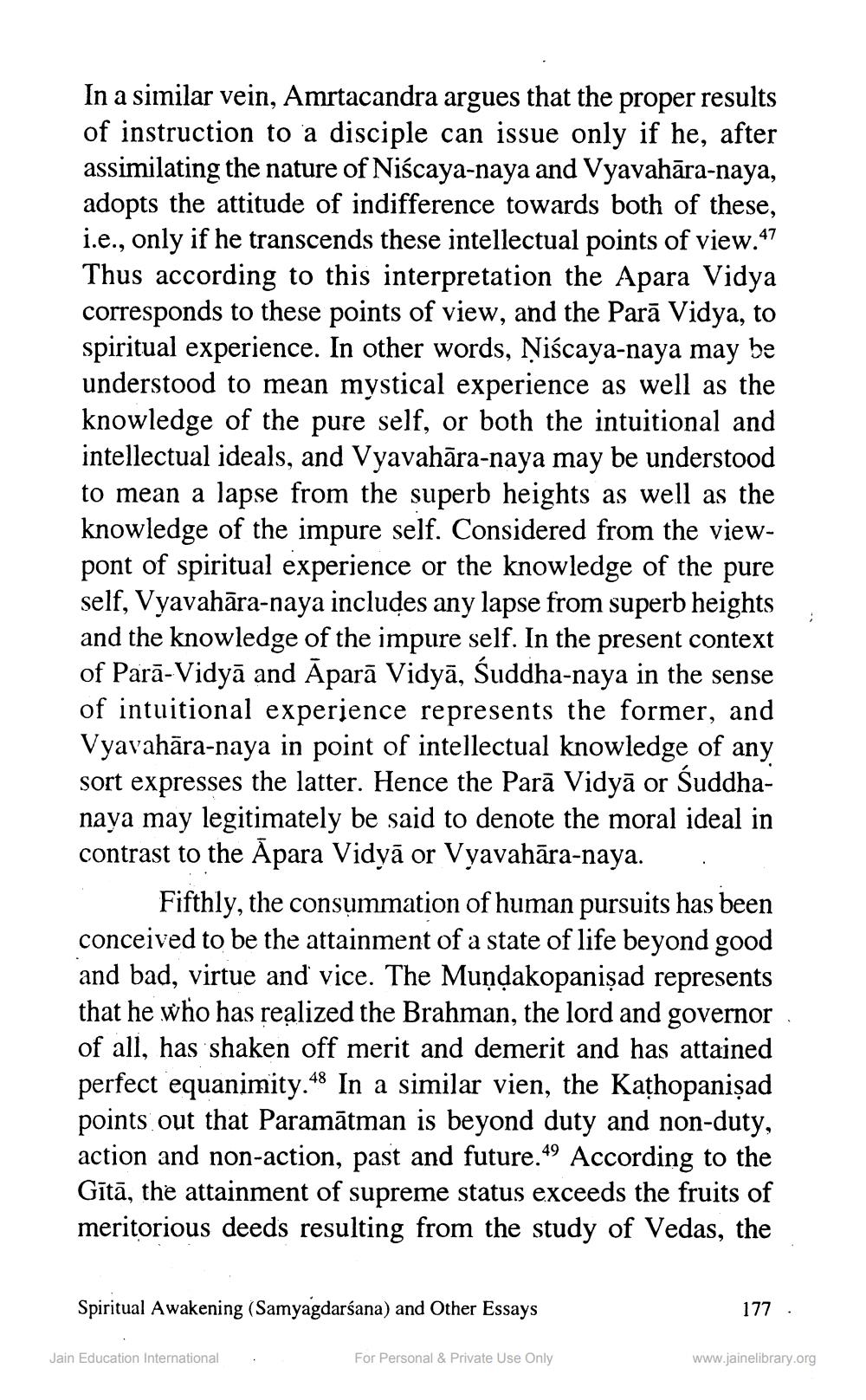________________
In a similar vein, Amrtacandra argues that the proper results of instruction to a disciple can issue only if he, after assimilating the nature of Niścaya-naya and Vyavahāra-naya, adopts the attitude of indifference towards both of these, i.e., only if he transcends these intellectual points of view.47 Thus according to this interpretation the Apara Vidya corresponds to these points of view, and the Para Vidya, to spiritual experience. In other words, Niścaya-naya may be understood to mean mystical experience as well as the knowledge of the pure self, or both the intuitional and intellectual ideals, and Vyavahāra-naya may be understood to mean a lapse from the superb heights as well as the knowledge of the impure self. Considered from the viewpont of spiritual experience or the knowledge of the pure self, Vyavahāra-naya includes any lapse from superb heights and the knowledge of the impure self. In the present context of Para-Vidya and Āparā Vidyā, Śuddha-naya in the sense of intuitional experience represents the former, and Vyavahara-naya in point of intellectual knowledge of any sort expresses the latter. Hence the Para Vidya or Śuddhanaya may legitimately be said to denote the moral ideal in contrast to the Apara Vidya or Vyavahāra-naya.
Fifthly, the consummation of human pursuits has been conceived to be the attainment of a state of life beyond good and bad, virtue and vice. The Mundakopanisad represents that he who has realized the Brahman, the lord and governor of all, has shaken off merit and demerit and has attained perfect equanimity.48 In a similar vien, the Kathopanisad points out that Paramātman is beyond duty and non-duty, action and non-action, past and future.49 According to the Gītā, the attainment of supreme status exceeds the fruits of meritorious deeds resulting from the study of Vedas, the
Spiritual Awakening (Samyagdarśana) and Other Essays
Jain Education International
For Personal & Private Use Only
177
www.jainelibrary.org




